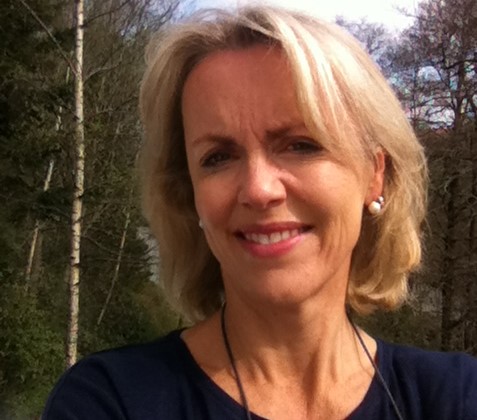“Diversity management is particularly relevant in academia”
Some people still shake their heads at the concept of diversity management. After all, isn’t it just about treating all employees equally?
The role, position, power and mission of research institutions make diversity management particularly relevant, according to Loveleen Rihel Brenna, a member of NTNU’s Committee for Gender Equality and Diversity.
“Diversity management offers an approach to the leadership role that benefits everyone in an organisation. The effect is positive at the individual, organisational and societal level,” says Brenna.
She explains how positive experience with diversity management has meant that more and more people have gone from shaking their heads to enthusiastically nodding – not because the form of management is trendy and politically correct, but because it is about profitability and sustainability.
Loveleen Rihel Brenna knows what she is talking about. She has worked with inclusion and diversity since 1995, including chairing the Women’s Panel for the Ministry of Children, Equality and Social Inclusion and the Brenna Committee on behalf of the Ministry of Education and Research.
In 2012, Brenna established Seema AS, which holds courses in diversity management, and she is set to give a speech in June this year at the network conference Values of diversity (more info in Norwegian).

“Both Jens and Sahar need to be heard”
Diversity management is, not surprisingly, about what it takes to lead a diverse workforce.
“Diversity is the sum of the visible and invisible variations between people,” explains Brenna.
“Diversity encompasses everyone, and organisations are therefore used to being around and managing diversity. But as the breadth of diversity increases, reflecting different religions, sexual orientation, functional level, ethnic or linguistic background, the organisation’s knowledge, attitudes, languages, structures and systems can be challenged.”
Brenna also believes it’s important to include people who don’t fall within the traditional minorities.
“Jens, at 50, may also need to be seen and heard, just as much as Sahar, 23, who wears a hijab. But he is part of the majority in society, and will therefore have a different experience of what inclusion and psychological safety mean than a woman wearing a hijab or someone in a wheelchair.”
These two individuals will also have different opportunities and rights in an organisation and in society at large, according to Brenna.
Read the news article: What is good diversity management?
The opposite of equality management
“Do you have a simple definition?”
“Diversity management is about managers’ diversity competence, which they use to achieve organisational goals. Diversity managers utilise the differences among employees to make best use of their expertise,” says Brenna.
Diversity managers focus on the individual, and take a collective responsibility to create an inclusive environment for all and a high level of psychological safety for both majority and minority groups, she believes.
“Isn’t it enough to treat employees equally? Isn’t that good management?”
“Many people think so, but I would in fact say that an equality mindset smothers diversity.”
Brenna explains: When we invite new people into a workplace, there is usually an expectation that they will blend in and become like us. Such an adaptation is necessary and natural when starting a job. But if the organisation has an assimilating culture; ‘come because you are unique, become like us if you want to survive’, it creates insecurity. In addition, you miss out on what people have to offer precisely because they are not the same as the majority in the workplace, she argues.
“Diversity managers create a ‘we’ culture by focusing on our similarities and encouraging our differences as a strength.”
Growing enthusiasm
On the other hand, some may think that diversity management does not benefit the majority.
“How do you feel about that?”
“This is interesting, and it’s a trap you can easily fall into when you hear the term ‘diversity management’. People assume it’s a form of management that takes care of the others and not ‘me’.”
Brenna holds many courses in diversity management and believes that people’s enthusiasm increases once they realise that it is a tool that applies to the whole organisation.
“Something happens when managers realise that not using diversity management means that they are actually missing out on important knowledge and resources.”
“It’s not something that’s just ‘nice to have’, but a management style that also strengthens academia and helps retain qualified labour, recruit students and perhaps even expand research fields.”
“Good diversity management is basically about examining whether the workplace can withstand having its old ways challenged and be open to new ways of thinking,” she says.
The difference between normal management and diversity management
There has long been a focus on representation and metrics in working life, some of which is also required by law.
“Can you explain how diversity management fits into that kind of perspective?”
“Diversity management is not just about metrics. It’s about identifying types of diversity in an intersectionality perspective, without violating privacy requirements,” Brenna says.
Brenna emphasises that the main difference between normal management and diversity management is that you work systematically and strategically to identify, coordinate and utilise the resources inherent in diversity to achieve the company’s goals and deliver on its social mission.
“Managers are not blind to differences, but make the differences relevant in the workplace. Creating a safe environment for different opinions is therefore an important part of the manager’s work.”
“A diversity manager is colour, class and gender conscious and takes action when discriminatory or stigmatising attitudes emerge.”
A relevant example is the Gaza war, according to Brenna, where employees can stand on either side of the conflict.
“Do you need special skills to successfully manage a diverse workforce?”
“A good diversity manager must first and foremost be competent and courageous, because the approach differs from normal management and may initially face resistance. In addition, managers must regularly conduct surveys to identify restrictive factors.”
“Especially relevant in academia”
In 2016, Brenna took the initiative to establish and chair the committee that has developed the world's first national standard for diversity management systems, under the auspices of Standards Norway. In January this year, it was decided that an international ISO Standard would be developed. (See the fact box.)
“The ISO is amazing,” she says, adding that this is the first time Norway has been in the driver’s seat in establishing an ISO management standard.
The fact that Norway is the first in the world to standardise diversity management does not mean that we are ahead of Europe, but a framework in the form of standards makes the work easier, according to Brenna.
“We’ve come a long way when it comes to protection against discrimination in the law, but Norway is not a leader when it comes to diversity management. One of the reasons we are behind is that we have only recently opened our eyes to intersectionality.”
“Is diversity management the same in academic institutions as in commercial institutions?”
“No, no really. The role, position, power and mission of academic institutions make diversity management particularly relevant. As a member of the Gender Equality and Diversity Committee at NTNU, I can see the important role an educational institution plays.”
“Are there any examples of good diversity management in academia?”
“No, no one really stands out. Gro Mjeldheim Sandal from the University of Bergen is a brilliant researcher. Her research perspective employs both diversity competence and management,” says Brenna.

Need an open culture for debate
Professor Gro Mjeldheim Sandal confirms that she has worked with and followed the field of diversity for many years. She believes that we still lack a lot of knowledge when it comes to diversity management, despite increasing interest in recent years.
“Managers can address diversity in the workplace in different ways. Some may be concerned with treating everyone equally regardless of their background and needs, while others may be evasive and passive, and others still may be concerned that everyone should be included and to utilise our differences,” she says.
There are few studies that have compared the outcomes of different forms of management on, for instance, efficiency, according to Sandal.
“Our studies a few years back showed that the latter form of management was associated with satisfaction and connection to the organisation, especially among employees with immigrant backgrounds.”
“Many, including Brenna, believe that you have to be tough and courageous to be a good diversity manager. Do you agree with that?"
“Yes, diversity management is not only about adaptation, but also about reaping benefits from the fact that employees have different experiences and perspectives.”
Sandal is concerned with diversity of opinion and an open and generous culture, which she also talks more about in the news article What is good diversity management?
“We see that some topics related to diversity in academia seem to evoke strong feelings, such as language requirements for foreign employees and international calls for proposals for positions. We must strive for a debate culture in which such topics can be openly discussed too.”
The Bergen researcher believes that woke, understood as being alert to prejudice and discrimination, remains important in academia. In everyday speech, however, woke is often used as a synonym for political correctness, giving the impression that it is something that has been imposed on us.
“Being aware of mechanisms that contribute to differential treatment and possibly exclusion is a good starting point for good management. It’s also crucial to capture the often invisible voices of the organisation; those that drown in the ‘dominant culture’.”
Academics also have prejudices
“Are any countries really good at diversity management? Like the USA?”
“I think it’s difficult to compare, because management takes place within a context, and the USA differs from Norway culturally, historically and in terms of labour market organisation.”
Until the end of 2000, most American research was based on the American civil rights movement and the situation for African-Americans, Sandal explains. In Norway, for example, we have seen an enormous growth in the number of immigrants from around 2 per cent in the early 1990s to around 16 per cent today. We also have completely different traditions for safeguarding employee rights and interests through cooperation between employers, unions and government, she believes.
“Do you think academia is easier to manage than other organisations?”
“Many of the mechanisms related to exclusion and inclusion are universal. We also know that stereotypes and prejudices emerge more clearly in the face of minorities with whom one has little personal experience. This is probably true of academics as much as of other people,” says Sandal.
“That’s why it’s important to have an active, alert and aware approach to the culture in the workplace and the tools used when hiring and developing employees. This probably also applies to academia, although the impression is that much impressive work has been done in this area in recent years.”
Translated by Allegro Language Services.
ISO stands for the International Organization for Standardization.
In 2016, Brenna took the initiative to establish and chair the committee that has developed the world’s first national standard for diversity management systems, under the auspices of Standards Norway. This work will also be led by the company Seema, of which Loveleen Rihel Brenna is the founder.
It was decided in January 2024 that the standard would be developed as an international ISO standard.




